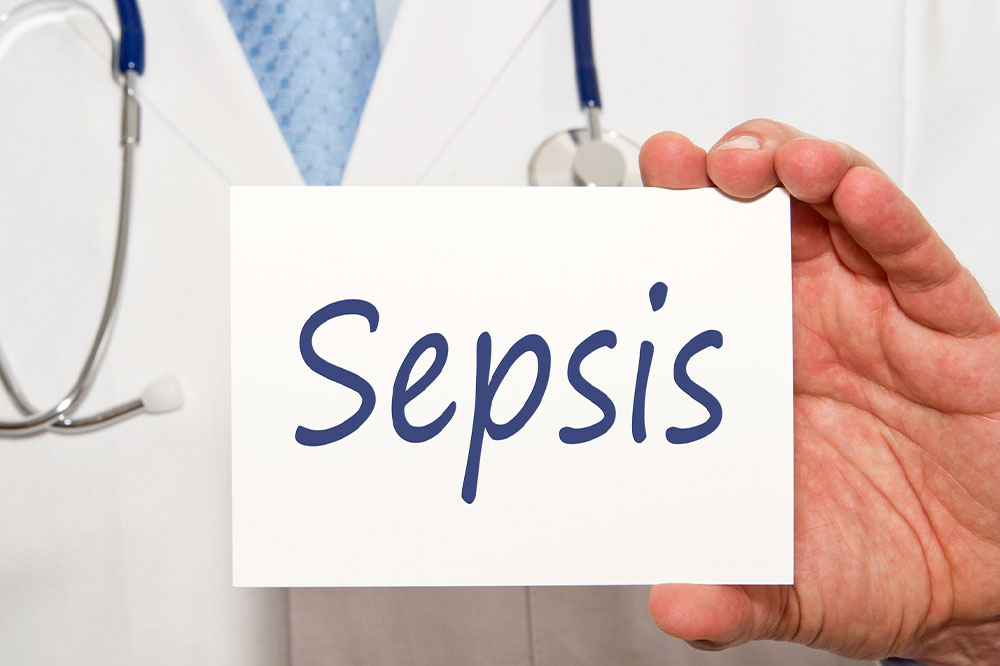
Signs, causes, and prevention of sepsis
Sepsis is a serious condition that arises from infections and may need immediate expert attention. It’s important to recognize the risk factors that increase one’s vulnerability to sepsis and understand the causes for prevention, early detection, and effective treatment. Being aware of the different pathways through which sepsis can develop also allows for targeted interventions to prevent its progression. By addressing the underlying infections promptly and effectively, one can minimize the incidence and impact of sepsis.
What is sepsis?
Sepsis is a life-threatening health emergency that arises when the body’s response to infection triggers a cascade of inflammatory reactions throughout the body. One’s immune system comprises an intricate network of white blood cells, a lymphatic system, and other organs. They are tasked with fighting off pathogens, including bacteria and viruses, and healing the body from any attacks before it worsens into infections. But due to various reasons, the infection, most commonly bacterial infection, may worsen and lead to sepsis. In many cases, sepsis may develop as a result of other infections, including COVID-19, influenza, or fungal infections.
What causes sepsis?
Sepsis can be triggered by various types of infections, including bacterial, viral, or fungal. These localized infections spread to the bloodstream. Infections originating in the lungs, urinary tract, or abdomen can quickly disseminate throughout the body. Common sources of infection leading to sepsis include:
- Pneumonia
- Urinary tract infections (UTIs)
- Gallbladder or liver infections
- Abdominal infections (such as appendicitis or peritonitis)
- Skin infections (like cellulitis or infected wounds)
- Bacterial bloodstream infections (bacteremia)
- Meningitis
- Bowel problems
Those with severe injuries and burns can also develop sepsis since the injury gives a passageway for the bacteria to enter the body. Apart from this, infections associated with medical devices are also a concern. Indwelling devices like urinary catheters, central venous catheters, or ventilators can act as entry points for pathogens, increasing the risk of sepsis if not properly managed. Lastly, in some cases, the infection itself can trigger an excessive immune response, resulting in systemic inflammation and subsequent organ dysfunction.
Symptoms of sepsis
Healthcare professionals look for specific signs that may indicate sepsis, including:
- Abnormal body temperature (either too high or too low)
- Drop in blood pressure
- Increased heart rate
- Chills and shivering
- Sudden fever
- Weak pulse
- Extreme fatigue or weakness
- Dizziness or lightheadedness
- Reduced urine output
- Nausea, vomiting, or diarrhea
- Skin rash or discoloration
- Sweaty palms
- Difficulty breathing
- Increased heart rate
- Rapid breathing or shortness of breath
- Decreased urine output
- Altered mental state or confusion
- Pale or mottled skin
- Clammy skin or excessive sweating
Sepsis may also affect the blood flow to the main organs like kidneys, lungs, liver, or one’s nervous system, which may function abnormally and cause disorientation or changes in one’s mental state.
Who is at risk of developing sepsis?
Sepsis is most commonly seen in older adults. Newborn babies younger than one year of age and adults over 65 are at a higher risk. Similarly, people with a compromised immune system are most vulnerable to sepsis flare-ups. This may include those recently hospitalized or those living with autoimmune conditions like diabetes, hypertension, lupus, or other health issues like kidney diseases or cancer.
Sepsis treatments and precautions
Early diagnosis and rapid treatment are paramount in sepsis management. The primary goals of treatment include addressing the underlying infection, supporting organ function, and managing the body’s response to inflammation. A therapy that supplements oxygen to support adequate oxygenation is one of the common early treatments of sepsis. Similarly, a healthcare professional may suggest surgery, dialysis, source control, drainage, or removal of any identified source of infection. One may also need supportive care like close monitoring of vital signs, nutritional support, and management of complications. Usually, those sepsis patients are directed toward the ICU, and a doctor may suggest treatments based on an individual basis.
Prevention is key to reducing the incidence of sepsis. Taking the following measures can significantly lower the risk of developing the condition:
- Practice good hand hygiene and infection control measures.
- Keep vaccinations up to date, including flu and pneumonia vaccines.
- Treat any infections promptly and adequately.
- Take precautions when using healthcare devices to prevent infection.
- Promote a healthy lifestyle to boost overall immune function.




